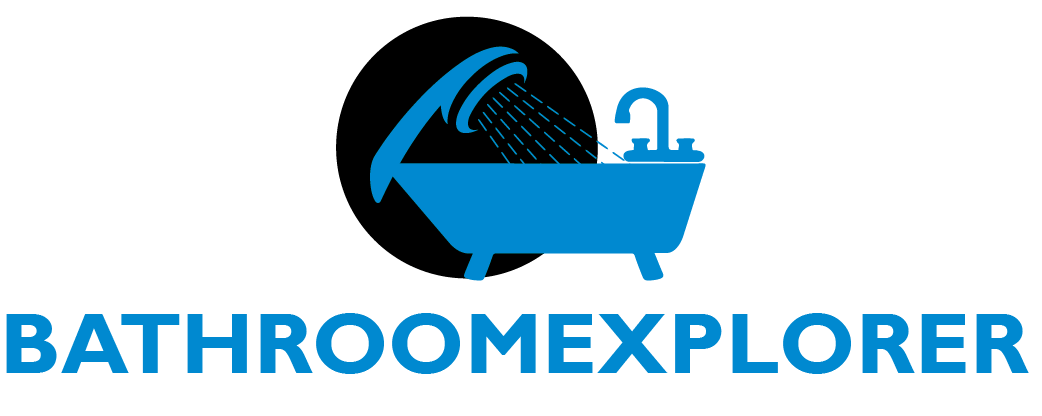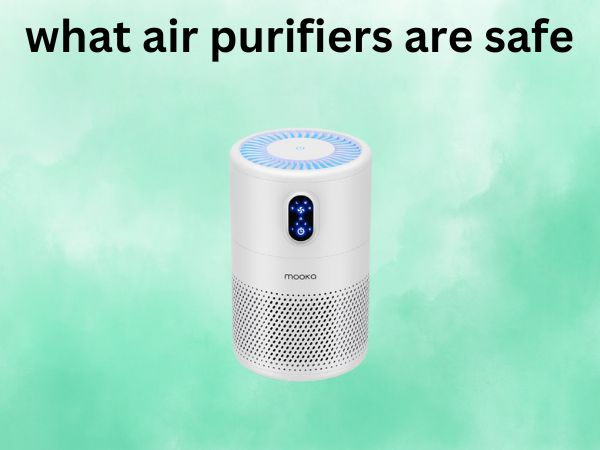What Air Purifiers Are Safe: Complete Guide to Healthy Air Solutions
In our quest for cleaner indoor air, air purifiers have become increasingly popular appliances in many homes. But with so many options available and concerns about their safety, you might be wondering: what air purifiers are actually safe to use? Not all air purifiers are created equal, and some technologies might introduce new problems while solving others. This comprehensive guide will help you navigate the world of air purifiers with safety as the top priority.
Table of Contents
Understanding Air Purifier Safety Concerns
Before diving into the safest options, it’s important to understand what makes some air purifiers potentially unsafe. The primary concerns revolve around by-products created during operation, electrical safety, and effectiveness at removing rather than redistributing contaminants.
The Dangers of Ozone-Generating Air Purifiers
One of the biggest red flags in air purifier safety is ozone production. Some devices intentionally generate ozone as their primary cleaning mechanism, while others produce it as a by-product.
Ozone is a highly reactive gas that can damage lung tissue, worsen asthma, and cause other respiratory issues even at low concentrations. The EPA warns that ozone generators sold as air purifiers can produce ozone at levels that exceed public health standards.
“I purchased what I thought was a premium air purifier years ago, only to discover it was an ozone generator,” shares Maria, an asthma sufferer. “Within days, my breathing problems worsened dramatically until I identified the cause.”
Safe Air Purifier Technologies and Filtration Methods
Let’s explore the air purification technologies that are generally considered safe when properly designed and certified.
HEPA Filters: The Gold Standard in Air Purification
High-Efficiency Particulate Air (HEPA) filters remain the most trusted technology for air purification. True HEPA filters remove at least 99.97% of particles as small as 0.3 microns, including dust, pollen, mold spores, and some bacteria.
What makes HEPA filters so safe?
- They work through mechanical filtration, not chemical reactions
- They don’t produce harmful by-products
- They don’t release captured particles back into the air
- Their effectiveness has been tested and proven for decades
HEPA technology is so reliable that it’s used in hospitals, clean rooms, and aircraft. For home use, air purifiers with true HEPA filters (not “HEPA-type” or “HEPA-like”) provide excellent filtration without safety concerns.
Activated Carbon Filtration for Chemical and Odor Removal
While HEPA filters excel at capturing particles, they don’t address gases, VOCs (volatile organic compounds), or odors. This is where activated carbon filters come in as a safe complementary technology.
Activated carbon works through adsorption—a process where gas molecules adhere to the carbon’s vast surface area without chemical reactions or harmful by-products. This makes it highly effective for:
- Removing cooking odors
- Filtering cigarette smoke
- Capturing VOCs from cleaning products, paints, and new furniture
- Reducing formaldehyde and other construction chemicals
Carbon filters eventually saturate and require replacement, but they pose no safety hazards during operation.
UV Light Technology: Benefits and Safety Considerations
Ultraviolet germicidal irradiation (UVGI) uses UV-C light to kill or inactivate microorganisms by destroying their DNA. When properly implemented in air purifiers, this technology can be safe and effective.
Safety considerations for UV technology include:
- Proper shielding to prevent UV exposure to humans and pets
- Ensuring the wavelength is specific to germicidal applications (typically 254 nanometers)
- Confirming adequate exposure time for effectiveness
- Checking that the system doesn’t produce ozone as a by-product
The best UV air purifiers incorporate this technology as a supplement to filtration, not as the primary cleaning method. Look for systems where air passes through a sealed chamber containing the UV light, preventing any direct exposure.
Ionizing Air Purifiers: When Are They Safe?
Ionizers work by releasing negatively charged ions that attach to airborne particles, causing them to settle out of the air onto surfaces. While this technology can be effective, safety varies significantly between designs.
Safe ionizers:
- Produce minimal or no ozone
- Include collection plates to capture charged particles rather than letting them settle on surfaces
- Operate as a secondary feature alongside HEPA filtration
- Meet CARB certification standards for ozone emissions
Avoid standalone ionizers without filtration, as they often create ozone and merely redistribute contaminants rather than removing them.
Photocatalytic Oxidation (PCO): Emerging Safe Technology
PCO technology uses UV light with a catalyst (usually titanium dioxide) to convert pollutants into harmless compounds like water and carbon dioxide. When properly designed, PCO can be safe and effective for VOC and odor removal.
Key safety factors for PCO purifiers:
- Ensuring complete reactions that don’t create harmful intermediates
- Proper catalyst design to prevent deterioration over time
- Verification that ozone is not produced as a by-product
- Combination with other filtration methods for comprehensive air cleaning
This technology continues to evolve, with newer generations addressing earlier safety concerns.
Safety Certifications and What They Mean
When evaluating air purifier safety, certifications provide valuable guidance. Here are the key certifications to look for:
California Air Resources Board (CARB) Certification
CARB certification ensures that an air purifier produces ozone below the safety threshold of 0.05 parts per million. California regulations prohibit the sale of air purifiers that exceed this limit, making CARB certification one of the most important safety indicators.
When shopping online or across state lines, CARB certification becomes even more crucial as regulations vary. All air purifiers sold in California must be CARB-certified, creating a de facto national standard for many manufacturers.
Energy Star and Electrical Safety Standards
Energy Star certification indicates not only energy efficiency but also adherence to electrical safety standards. This matters because air purifiers typically run continuously for long periods.
Additional electrical safety certifications to look for include:
- UL (Underwriters Laboratories)
- ETL (Intertek Testing Services)
- CSA (Canadian Standards Association)
These certifications ensure the device won’t become an electrical hazard through overheating, short-circuiting, or other failures.
Association of Home Appliance Manufacturers (AHAM) Verification
AHAM verification provides standardized testing for an air purifier’s cleaning efficiency through its Clean Air Delivery Rate (CADR). While primarily focused on performance rather than safety, AHAM verification indicates the manufacturer has submitted their product for independent testing.
The CADR rating helps determine if an air purifier is appropriately sized for your space, preventing the safety issues that can arise from using an undersized unit continuously at maximum power.
Safe Air Purifiers for Special Populations
Some groups have heightened sensitivity to air quality and require special consideration when choosing a safe air purifier.
Child and Pet-Safe Air Purifiers
Children and pets spend more time near the floor, where heavier particles settle, and have developing respiratory systems that are more vulnerable to irritants. For these households, safety priorities include:
- Tip-over protection and sturdy construction
- Child-lock features for controls
- Quiet operation for use in bedrooms
- No accessible small parts
- No ozone production whatsoever
- Minimal noise that could disturb sensitive ears
“After bringing our newborn home, we upgraded to a purifier specifically marketed for nurseries,” explains new parent Alex. “The peace of mind knowing it’s designed with extra safety considerations was worth every penny.”
Best Options for Allergy and Asthma Sufferers
For those with respiratory conditions, air purifier safety is particularly crucial. The Asthma and Allergy Foundation of America (AAFA) certifies some air purifiers through their asthma & allergy friendly® Certification Program.
Safe options generally include:
- True HEPA filtration capturing 99.97% of allergens
- Sealed system preventing leakage around filters
- No ozone or VOC emissions
- Multiple speeds for customization during high-pollen or high-symptom days
- Timer functions to increase filtration before bedtime
People with these conditions should avoid any purifiers with ionization functions unless explicitly certified for zero ozone production.
Maintenance Requirements for Safe Operation
Even the safest air purifier can become problematic if improperly maintained. Regular maintenance ensures continued safe operation:
- Filter replacement: Follow manufacturer guidelines for replacement schedules—clogged filters reduce effectiveness and may cause motor strain
- Regular cleaning: Wipe external surfaces and intake grills to prevent dust buildup and potential burning smells
- Proper placement: Maintain clearance around the unit for proper airflow and to prevent overheating
- Checking for damage: Inspect power cords, plugs, and housing for any damage that could compromise safety
- Following usage guidelines: Some purifiers aren’t designed for continuous 24/7 operation—respect the duty cycle recommendations
Remember that moist filters can become breeding grounds for mold and bacteria, creating a new air quality problem. Replace wet or visibly dirty filters immediately, even before the recommended timeline.
Frequently Asked Questions About Safe Air Purifiers
1. Are air purifiers with ionizers completely unsafe?
Not necessarily. Modern ionizers that meet CARB certification standards produce negligible amounts of ozone and can be safe when used as directed. However, they’re most effective when combined with other filtration methods rather than as standalone purifiers. If you have respiratory conditions, it’s generally safer to choose models without ionization features.
2. How can I tell if my current air purifier produces ozone?
Check if it uses terms like “ionizer,” “plasma,” “electrostatic precipitation,” or “electronic” air cleaning. Review the manual or manufacturer’s website for CARB certification. You might also notice a distinctive sharp smell similar to the scent after a thunderstorm, which indicates ozone production. If concerned, you can purchase inexpensive ozone test kits online.
3. Do I need to turn off my air purifier when I’m not home for safety reasons?
Most quality air purifiers are designed for continuous operation and have passed safety certifications for unattended use. However, it’s always prudent to turn off any electrical appliance during extended absences like vacations. Some models have automatic timers or smart features that let you schedule operation only when needed, saving energy while maintaining safety.
4. Can HEPA filters release captured particles back into the air?
Properly functioning HEPA filters in well-designed air purifiers will not release captured particles back into the air. The mechanical filtration process physically traps particles in the filter material. However, when changing filters, handle them carefully to avoid disturbing collected contaminants, and follow the manufacturer’s instructions for safe disposal.
5. Are portable air purifiers safer than whole-house systems?
Both can be safe when properly installed and maintained. Portable units allow for targeted purification and are easier to monitor, while whole-house systems integrated with HVAC offer comprehensive coverage with less maintenance. The safety comparison depends more on the specific technologies used rather than whether the system is portable or whole-house. For either option, proper sizing, quality filtration methods, and regular maintenance are the key factors in ensuring safety.
Conclusion: Making the Right Choice for Clean, Safe Air
The safest air purifiers combine effective filtration technologies with proper certifications and thoughtful design. For most homes, air purifiers featuring true HEPA filters combined with activated carbon represent the safest, most effective option. Adding properly-designed UV or PCO technology can provide additional benefits without safety concerns.
Before purchasing, verify CARB certification to ensure minimal ozone production, check for appropriate safety certifications like UL or ETL, and consider AHAM verification for performance validation. Remember that the right size purifier for your space is also a safety consideration—overworking a small unit can lead to overheating and reduced lifespan.
Ultimately, improving indoor air quality shouldn’t come at the cost of introducing new health risks. By selecting air purifiers with proven safe technologies and proper certifications, you can breathe easier knowing you’ve made a choice that enhances rather than compromises your home’s air quality.


![Levoit Air Purifiers [How Good Are They Really?]](https://bathroomexplorer.com/wp-content/uploads/2025/04/how-good-are-levoit-air-purifiers.jpg)
![5 Best Air Purifiers for 3000 Sq Ft [In 2025]](https://bathroomexplorer.com/wp-content/uploads/2025/04/best-air-purifier-for-3000-sq-ft.jpg)

![5 Best Air Purifiers for Dust and Pet Hair [In 2025]](https://bathroomexplorer.com/wp-content/uploads/2025/04/best-air-purifiers-for-dust-and-pet-hair.jpg)
![How to Reset Your Aroeve Air Purifier [Complete Guide]](https://bathroomexplorer.com/wp-content/uploads/2025/04/how-to-reset-air-purifier-aroeve.jpg)
![What Is The Best Air Purifiers for Pet Dander [In 2025]](https://bathroomexplorer.com/wp-content/uploads/2025/04/best-air-purifiers-for-pet-dander.jpg)